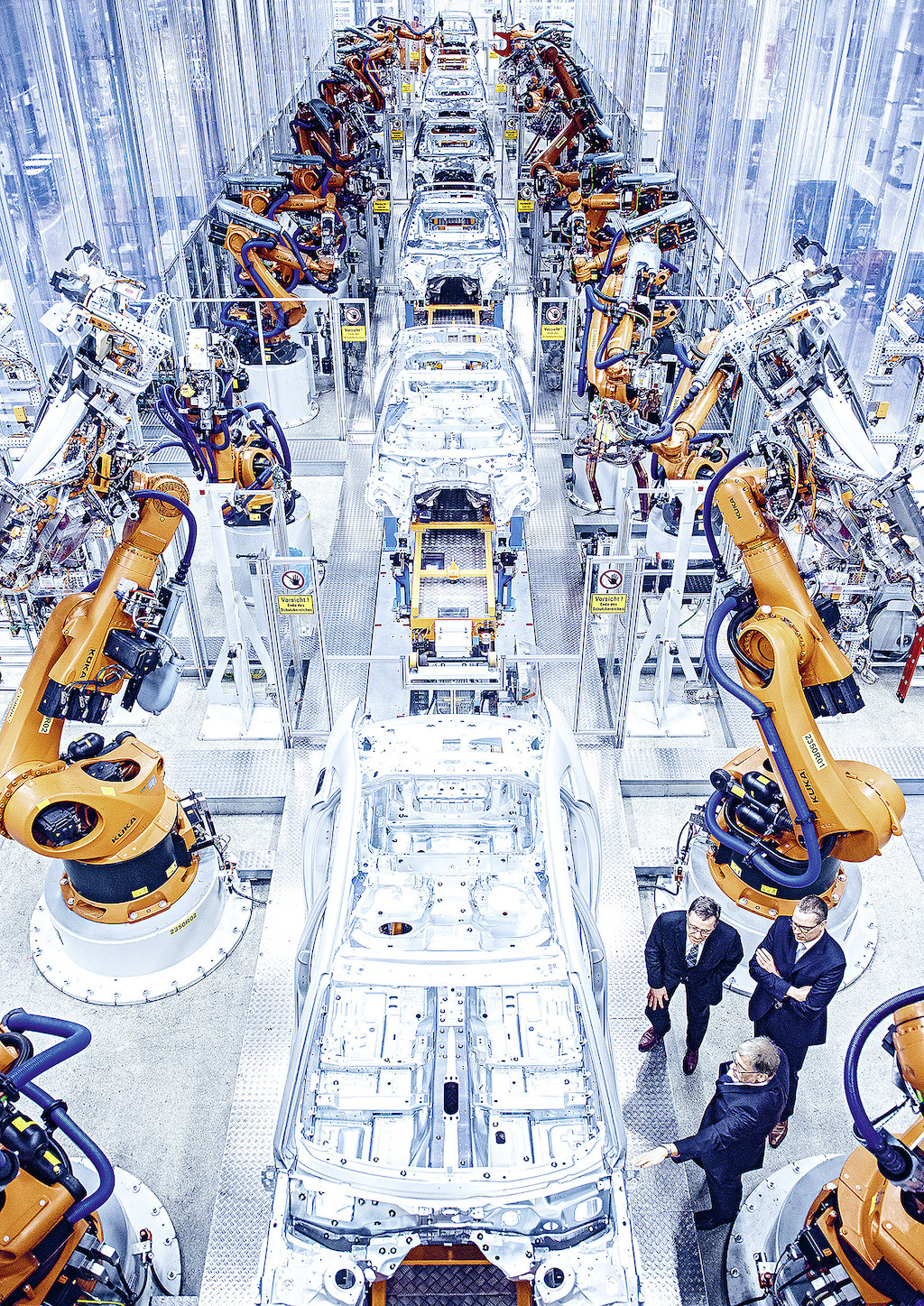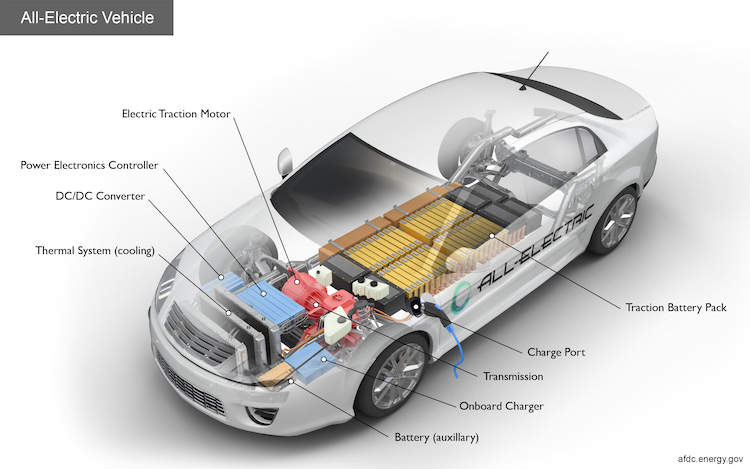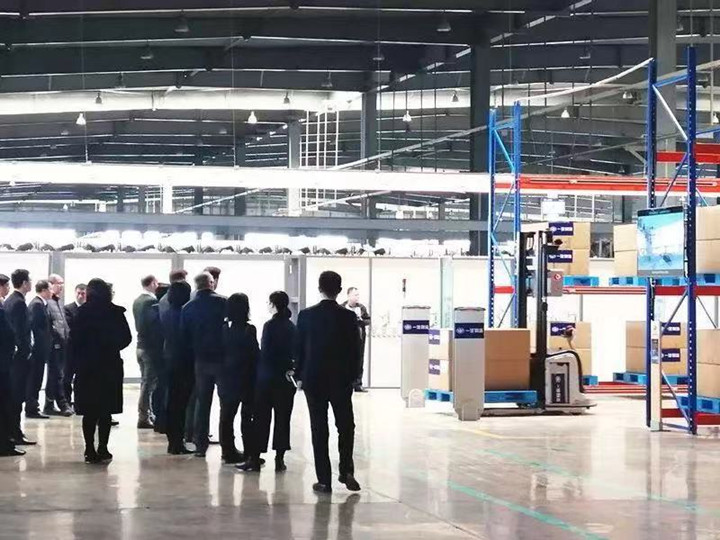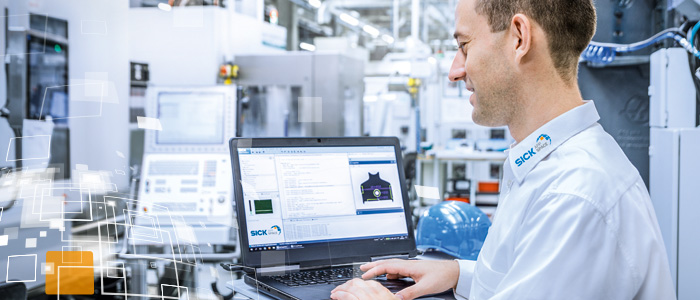
Special report: Robotics and automation in automotive manufacturing and supply chains
in association with SICK AppSpace
The automotive industry is undergoing the most fundamental transformation in its history and, as this article suggests, a flexible approach to software development will become essential to companies that want to stay competitive.
As well as applications development, industry is experiencing the impact of other key technologies such as:
- robotics and automation;
- supply chains, warehousing and logistics;
- digitalisation;
- electric engines;
- autonomous systems; and
- connectivity, or the internet of things.
Clearly, it would be almost impossible to go into any great depth in a 2,000-word article, but we will at least bring to your attention the new technologies that are already changing the automotive landscape.
Looking back in time
First of all, let’s go into reverse gear and set the scene. The car industry has always been one of the sectors that had the most advanced technology and processes.
The assembly line did away with the craftsman-like approach where one highly skilled person or a small group of highly skilled people would perform all necessary tasks in the production of a finished vehicle.
The first assembly lines in automotive manufacturing were introduced in the early 1910s, and since then, large numbers of people have been involved in the production of cars, each person performing a relatively simple task, in just about every large-scale operation.
And by sub-dividing the production in this way, it became possible to reduce the complexity of each task to the point where some tasks could be automated and robots given the job.
Robots everywhere
Welding is probably the most well known task for robots in automotive production. Robots also do heavy lifting and conveyors carry the cars along a linear production line while the robots work on them.
Here is a list of applications of industrial robot arms in automotive manufacturing:
welding: this is the single most important task for robots in the automotive manufacturing sector, and provides dramatically faster processes and higher quality of work;
painting: a relatively under-used application for industrial robot arms in the automotive sector, but quickly growing in use;
gluing: applying glue to vehicle components such as the windscreen is often done by collaborative robots and, therefore, is one of the newest robotic applications;
assembly: a large proportion of assembly tasks is too complicated for robots, but applications are growing as software and vision systems become more sophisticated and powerful;
machine tending: robots can tend machines such as CNCs and save an enormous amount of human work time in that way;
material handling: whether it’s moving material from CNCs, or parts from conveyors or pallets and boxes, robot arms are saving a huge amount of time and saving money, as well as improving accuracy; and
transporting material: autonomous mobile robots have grown rapidly over the past couple of years and on the way to dominating the warehouse, and some even have arms attached to them.

Making robots more friendly to humans
Collaborative robots are on the way to fundamentally changing the perception of all industrial robots.
Until recently, industrial robots – meaning those big, hulking arm-like machines – were considered so dangerous that they were always caged off and kept separate from human workers.
The big ones are still kept separate as a precaution, but even they can now be converted to take on some “collaborative” features, such as awareness of humans near them, which would make them slow down or stop completely.
Collaborative robots tend to be smaller so they can’t do what the big robots do, but they have found many and varied applications in the manufacturing and logistics sector.
In automotive manufacturing, collaborative robots can be found applying glue to windscreens and other components, and they can be found helping out with final visual inspections, and opening and closing doors to “hear” if they sound right and “feel” if they operate correctly.
Sensors enable this type of assessment by collaborative robots, but there is a specific ISO certification which enables a manufacturer to call its robots “collaborative”.
So even if the big machines are made safer through integrating perception technologies, whether robot manufacturers will choose to call them “collaborative” remains to be seen.
Some people call autonomous mobile robots, or AMRs, “collaborative” because they are equipped with collision avoidance sensors which enable them to humans and other obstacles. They are as safe as collaborative robotic arms currently finding their way into large parts of industry, as AMRs are doing.
One of the key advantages of the new collaborative robots is that can be “taught” complex tasks in very straightforward ways – by simply holding it and guiding it through a task once or twice.
Traditionally, industrial robot arms require highly qualified experts to program them using computers and are operated through a special type of computer called “programmable logic controller”, or PLC.
Some have predicted the demise of the PLC, partly basing their forecast on how collaborative robots are able to learn and perform many tasks without the need for an additional computing device.
The end of the assembly line
In the future, it’s possible that what could be described as a the “traditional linear conveyor system”, or production line, will largely disappear.
It’s probably difficult to imagine that, but the alternative currently being researched is rather interesting.
Research is being conducted by various companies into the future of automotive manufacturing, and one scenario being explored involves autonomous mobile robots carrying vehicles through the production process, from one robotic cell to another.
One robotic cell may install the electronics system, another put in the engine, then another welding the body parts together, and others doing things like assembly, painting and so on.
This “robotic cell-based process” may result in the autonomous mobile robot carrying the vehicle in a meandering fashion through the factory, whereas now, we mainly see a very straight production line.
Why would this robotic cell-based system be advantageous? For two reasons:
installing conveyor systems and a linear production line is more expensive than using autonomous mobile robots because it fixed infrastructure costs more to construct.
Autonomous mobile robots do not require any fixed infrastructure to be placed. Everything about them – from the machines themselves to their charging points – is moveable.
Another big advantage of what might be called the “flexible production” line involving autonomous mobile robots is that it enables manufacturers to change layouts for any reason.
Reasons might include discovering and implementing processes that are more efficient and changes in product or system design.
Usually, changing a fixed-infrastructure operation involves huge expense and a lot of time. It should be added, however, that there may be advantages to having fixed infrastructure that autonomous mobile robot-based system may not be able to beat – speed is one of the biggest.
However, autonomous mobile robots are getting faster and bigger – some have payloads approaching three tons, and they may become modular in that robotic arms could be attached to them.

Electric future
So far, we have highlighted the changes that have occurred within factories and warehouses, which are quite significant in themselves.
However, the biggest change happening now is in the world outside. Consumers all over the world are making it clear that they are want a change from petrol-driven cars to cleaner alternatives. In China, the world’s largest automotive market, this new generation of mobile machines is given the label “new energy vehicles”.
The two main types of new or alternative energy are hydrogen and electricity. The main company championing hydrogen is Toyota, the world’s largest automaker and, ironically, the market leader in electric vehicles for the mass market.
Which one of these alternative energies gains ascendancy in the next few years will determine how the automotive market globally will develop for the foreseeable future.
And wherever the future takes us all, many experts say that the days of the petrol-driven combustion engine are numbered.
Why does this matter to manufacturers?
According to some experts in automotive manufacturing, the production processes involved in making electric cars is significantly different from those of current, petrol cars.
One of the reasons for this is that industrial designers are opting for things such as gluing and other joining methods instead of welding. Given that welding is absolutely fundamental to traditional automaking, this is a dramatic departure.
Moreover, many of the internal components will almost certainly be made using 3D printing, or additive manufacturing, processes.
And, interestingly, the idea of a vehicle driving itself around the factory and getting itself made is not as far-fetched as it might sound at first.
Essentially, the the part of the vehicle that is self-driving will be built first so it can move around the factory without the need for separate specialist autonomous mobile robots, or automated guided vehicles.
In other words, the wheels and base of the car will be put together first and then the rest of it while it drives itself through the factory.
While some may think this is a flight of fantasy and not likely to happen any time soon, the fact is that the technology is already available to do all this – it just needs some talented system designers and particularly forward-looking companies to implement them.

Supply chains
A supply chain is the distribution and storage systems used by companies throughout their operation, from raw materials they receive from their own suppliers right through to the supply of the end product to their customers.
Robots are increasingly playing an integral part in most large companies’ supply chains. In fact, most researchers are finding that this is the fastest-growing market for robotics and automation technologies.
What could be described as the iconic or quintessential robot in the new supply chain landscape is the autonomous mobile robot, or AMR, which is a wheeled platform on which most often shelves are installed.
Sometimes called warehouse robots, these AMRs have been finding applications in an increasing number of warehouses across the world, and Amazon was one of the first to use them on a large scale – some would say AMRs are the main reason for Amazon’s success in the online retail market in recent years.
Now, it’s not just Amazon that uses warehouse robots, it’s just about every large and even medium-sized warehouse operation.
AMRs have been found to increase efficiency and accuracy, with productivity gains calculated to grow by about three to eight times, sometimes more. This means the return on investment is quite short and to add to their attraction, AMR suppliers are also providing them on a pay-as-you-go basis.
At the moment, AMRs are only really allowed to be operated within warehouses. But SICK, a specialise makers of sensors, has released a technology which is the first to be certified for outdoor use.
And when we look even further outdoors, there are companies which are developing large vehicles, such as trucks, for driverless transport for goods within a site or even along public roads.
Mercedes is one of the companies at the forefront of developing driverless trucks, but they are by no means the only company to do so.
As these technologies emerge – robotic arms for material and part handling, AMRs, and driverless vehicles – it’s possible that, within about five years, supply chains are could be more than 50 per cent autonomous. Some companies may already be able to make that claim.
Digitising the industrial world
Digitalisation has been a massive undertaking in the past few years and could be said to have reached a very high level now. In other words, it took a while to design virtual versions of factories, machines, parts and individual components, but much of it is done now.
And it’s not just a visual representation of things they designers were after, it was also essential to have integrated real-world physics into them. This is why a “digital twin” of something is so useful.
Now, with all the digital twins available, it is possible to use computers to design virtual versions of a factory or warehouse containing all the machinery and processes – right down to the human workers in situ.
Companies such as Siemens have been at the forefront of this trend, but there are many other companies which have done groundbreaking work in the sector. If the computer games industry can do it, so can traditional industry.
And it’s not just in manufacturing that digitalisation has found unprecedented applications, digital supply chains are all the rage.
Being able to visualise an entire distribution and storage network – or manufacturing process – in realtime on one computer screen provides a never-before-experienced level of power to manage and refine processes and make them increasingly efficient and productive.
Furthermore, with increasingly sophisticated artificial intelligence systems becoming more widely available, humans need only take critical decisions and leave all the routine to the digital enterprise, allowing it to almost run itself.
For a more extensive look into digitalisation, read our feature, Digital manufacturing: An overview of an increasingly complex scenario.

App development is fundamental to everything
All of the above technologies comes with a requirement to write software applications, or apps. And while some apps can be used by many different companies because they deal with tasks that are common to many companies, some apps need to be specially built from the ground up for a specific purpose – a purpose that perhaps no other company needs it for.
In order to enable this, SICK has launched something called AppSpace (see video below), a flexible and fast software development platform that enables programmers to create solutions for the entire industrial process.
AppSpace offers system integrators and original equipment manufacturers the “freedom and flexibility” to independently develop application solutions that are tailored to the specific needs and requirements of any task.
Whether it’s designing the ideal online user interface, selecting the most suitable programming technology, or distributing the sensor app on various SICK sensors, AppSpace gives developers the power to develop their own customized solutions.
Additionally, SICK’s AppSpace & Vision Now can take a product such as a 2D or 3D vision camera and make it a solution by only using the vision tools necessary for the product to solve the application.
To learn more about the SICK AppSpace Solutions contact SICK at info@sick.com.
